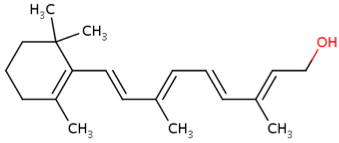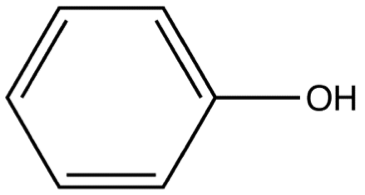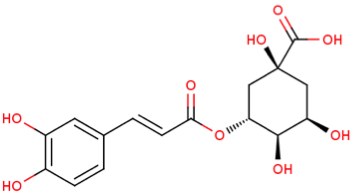Showing report for saskatoon_berry
Saskatoon Berries
 |
wp-content/uploads/2012/11/Berries-5M.jpg) |
Saskatoon berries are sweet, purplish-blue berries that are found in the western Canadian prairies and northern US states. They look very similar to blueberries but show somewhat more variation in colour and size. People have used plenty of names to describe the same berries, including: Serviceberries, June berries, Shadberries, Sugar pears and Indian pears. This well-known western Canadian fruit has been used by indigenous peoples for centuries, and became an important part of the diet of early European pioneers in the 1800's. Saskatoon berries can be baked into pies, turned into jams or jellies, eaten as-is, or even made into juice and wine! Sweet, tasty, and juicy, saskatoon berries are part of the Rosaceae family (Pruski) of plants. Their scientific name is Amelanchier alnifolia Nutt (Juríková). The berries can be found on low-growing deciduous shrubs not unlike blueberries. And like blueberries, their nutritional profile is out of this world! Rich with vitamins (riboflavin, vitamin A and C, folate, biotin), minerals (iron, manganese, potassium), phenolic acids, anthocyanins, flavonoids, and hydroxycinnamic acids, saskatoon berries are great for maintaining or improving your health, reducing your risk of cardiovascular disease, fighting cancer, and more!
Vitamins
 |
 |
Beneficial B-Vitamins
Saskatoon berries contain high levels of three types B-vitamins, and each one plays a different role in the body. Riboflavin, also known as vitamin B2, is an orange-yellow chemical, and like other B-vitamins, is needed for the metabolism of fats, carbohydrates, and protein. It's also very important for maintaining healthy teeth, skin, hair, and nails, as well as in making sure that the thyroid functions properly [Cimino]. Folic acid is another important vitamin found in saskatoons. Folate is a supplement that all pregnant women need to take to prevent their babies from developing spinal cord problems (such as spina bifida or acephaly) and cognitive birth defects. But folate isn't just for babies and moms-to-be, it's for everyone. Folate is essential for the growth of new cells (especially red blood cells). It can also decrease risk of developing cardiovascular disease (HOW??), and can reduce side effects of certain arthritis medications and cancer chemotherapies (HOW??) [Wang, Shea, Nadhananan].
Finally, 100g??? or a cup of saskatoon berries can fulfill 67% of your daily recommended intake of biotin, also known as vitamin B7 (source). This vitamin is an essential nutrient for humans [HMDB], and if levels of it become too low, you can experience a number of adverse health effects including hair and nail loss as well as rashes. Shortages of this vitamin in pregnant women can lead to congenital birth defects.
Bottom Line: The B-vitamins in saskatoons will make you B-eautiful! Riboflavin, folic acid, and biotin all have great effects on the hair, skin, teeth, and nails, and ensure growth of new cells in the body.
 |
 |
 |
Metals in Berries?!
 |
uploads/2013/06/saskatoons-04.jpg) |
Another metal found in abundance in saskatoons is iron. Iron is very important to many body functions, especially because it is a key part of the oxygen carrying protein called hemoglobin. Without enough iron, your body's ability to transport oxygen is reduced, and you're susceptible to a blood condition called anemia. Symptoms of this disease typically include tiredness, dizziness, and general muscle weakness. Saskatoon berries are a good, easily absorbed source of this essential metal.
Another essential mineral/metal found in abundance in saskatoons is potassium. Controled by the kidneys, potassium is important in regulating blood pressure because it can restore the balance between Na+ and K+ levels. This, in turn, lowers blood pressure and combats hypertension, reducing the risk of stroke and heart disease [He, Weaver]. Potassium also helps to maintain bone density, lowering the risk of osteoporosis and other related bone diseases. Having enough potassium becomes more important as you age [Tucker et al.].
Bottom Line: Manganese, iron, and potassium are just some of the helpful heavy metals in saskatoons! Each play an essential role in bodily function.
Phenolic Acids
 |
Anti-inflammatory Anthocyanins
 |
articles/analytix/rapid-separation-of.html#sthash.wA8NjmFZ.dpuf) |
The anthocyanins in saskatoons also are good for your immune system. In fact some of these anthocyanins were found to induce the production of TNF-α (tumour necrosis factor-alpha) proteins, which are important in regulating the lymphocytes in your immune system [Wang and Mazza]. TNF-α is a cell-signalling protein or adipokines (a type of cytokine) that regulates the immune system by initiating an acute phase reaction in response to inflammation [Abbas]. If the production of TNF-α gets deregulated, then a variety of health problems can arise: such as Alzheimer's disease, inflammatory bowel disease, major depression and cancer [Swardfager, Brynskov, Dowlati, Locksley].
Bottom line: A handful of saskatoon berries is tastier and cheaper than pack of Advils
Flavonoids
 |
 |
Bottom line: This duo of funky flavonoids are fantastic for fighting inflammation and frying cancer.
Hydroxycinnamic Acids
Saskatoon berries are surprisingly acidic - between 3.65 and 4.18 on the pH scale [Zatylny]. This acidity come from the many organic acids in the berries, including hydroxycinnamic acids - a class of organic acids that is full of healthy benefits [Ozga]. There are three hydoxycinnamic acids sound in saskatoons that are particularly noteworthy: caffeic acid, chlorogenic acid and ferulic acid. Caffeic acid (not related to caffeine) is a member of the hydroxycinnamic class. Recent research indicates caffeic acid has a number of beneficial anti-cancer properties. In one study, caffeic acid induced the death of cancerous cells (apoptosis) by inhibiting a protein associated with apoptosis regulation, this led to a molecular domino effect that eventually killed the cancerous cells [Chang]. In another study, caffeic acid was shown to have the same apoptosis-inducing effect on colon cancer cells [Jaganathan]. Furthermore, caffeic acid can unleash a barrage of cellularly produced cancer killing compounds, , including reactive oxygen species (ROS) that damage a cancer cell's DNA and induce apoptosis. [Rajendra]. Caffeic acid also has some very clear anti-inflammatory effects. Caffeic acid will hunt down harmful chemicals in an effort to reduce inflammation, inhibit inflammatory genes, as well as reducing damage created by inflammation [de Cunha/Zhang/Yang]. Chlorogenic acid, which is also found in coffee, is another magnificent member of the hydroxycinnamic class [McCarty]. Several studies have shown that chlorogenic acid has an anti-diabetic effect that is caused by delaying glucose absorption in the gut and promoting glucose uptake by muscle cells through an enzyme called AMP-Kinase (AMPK) [Johnston/Ong/Hunyadi]. Chlorogenic acid has also been associated with improved lipid metabolism by activating the same AMPK enzyme [Cho/Ong]. Ferulic acid is a third member of this hydroxycinnamic class of compounds. Ferulic acid has been shown to significantly lessen the effects of UV radiation on skin, so much so that it has actually been used in sunscreen [Di Domenico]. This includes inhibiting cancer-causing enzymes, attenuating degradation of collagen fibers and reducing hyperplasia (a cancer-like proliferation of cells) [Staniforth]. Ferulic acid is also effective in preventing cancer growth: it promotes the production of apoptosis-causing enzymes (caspase), and increasing ROS (reactive oxygen species like super-oxide) levels in an effort to kill cancer cells, and inhibit cancer growth. [Alias/Karthikeyan/Peng/Prabhakar].
Bottom line: Don't ask why, just eat saskatoon berry pie
 |
 |
 |
References
- Pruski K, Nowak J, Grainger G. Micropropagation of 4 cultivars of saskatoon berry (Amelanchier-alnifolia nutt). Plant Cell Tissue Organ Cul. 1990;21(2):103–109.
- Juríková T, Balla S, Sochor J, Pohanka M, Mlcek J, Baron M. Flavonoid profile of saskatoon berries (Amelanchier alnifolia Nutt.) and their health promoting effects. Molecules. 2013;18(10), 12571-12586.
- Jane Higdon. Vitamin C. http://lpi.oregonstate.edu/infocenter/vitamins/vitaminC/ (accessed 10 July 2014).
- Jane Higdon. Vitamin A. http://lpi.oregonstate.edu/infocenter/vitamins/vitaminA/ (accessed 10 July 2014).
- Cimino JA, Jhangiani S, Schwartz E, Cooperman JM. Riboflavin metabolism in the hypothyroid human adult. Exp Biol Med. 1987;184(2):151-153.
- Wang L, Li H, Zhou Y, Jin L, Liu J. Low-dose B vitamins supplementation ameliorates cardiovascular risk: a double-blind randomized controlled trial in healthy Chinese elderly. Eur J Nutr. 2014;1-10.
- Shea B, Swinden MV, Ghogomu ET, Ortiz Z. Katchamart, W., Rader, T., et al. Folic Acid and Folinic Acid for Reducing Side Effects in Patients Receiving Methotrexate for Rheumatoid Arthritis. The J Rheumatol. 2014;41(6):1049-1060.
- Raghu Nadhanan R, Fan CM, Su YW, Howe PR, Xian CJ. Fish oil in comparison to folinic acid for protection against adverse effects of methotrexate chemotherapy on bone. J Orthop Res. 2014;32(4):587-596.
- Mazza G. Compositional and functional properties of saskatoon berry and blueberry. Int J Fruit Sci. 2005;5(3):99-118.
- http://www.hmdb.ca/metabolites/HMDB00030
- National Research Council. Dietary Reference Intakes for Vitamin A, Vitamin K, Arsenic, Boron, Chromium, Copper, Iodine, Iron, Manganese, Molybdenum, Nickel, Silicon, Vanadium, and Zinc. Washington, DC: The National Academies Press, 2001.
- He FJ, MacGregor GA. Beneficial effects of potassium on human health. Physiol Plantarum. 2008;133(4):725-735.
- Weaver CM. Potassium and health. Adv Nutr. 2013;4(3):368S-377S.
- Tucker KL, Hannan MT, Chen H, Cupples LA, Wilson PW, Kiel DP. Potassium, magnesium, and fruit and vegetable intakes are associated with greater bone mineral density in elderly men and women. Am J Clin Nutr. 1999;69(4):727-736.
- Robbins RJ. Phenolic acids in foods: an overview of analytical methodology. J Agr Food Chem. 2003;51(10):2866-2887.
- Adhikari DP, Francis JA, Schutzki RE, Chandra A, Nair MG. Quantification and characterisation of cyclo-oxygenase and lipid peroxidation inhibitory anthocyanins in fruits of Amelanchier. Phytochem Anal. 2005;16(3):175-180.
- Vane JR, Botting RM. The mechanism of action of aspirin. Thromb Res. 2003;110(5-6):255-8.
- Wang J, Mazza G. Effects of anthocyanins and other phenolic compounds on the production of tumor necrosis factor α in LPS/IFN-γ-activated RAW 264.7 macrophages. J Agr Food Chem. 2002;50(15):4183-4189.
- Abbas A, Lichtman A, Pillai S. Basic immunology Functions and Disorders of the Immune System, 4 ed. Philadelphia, PA: Saunders/Elsevier.; 2012.
- Swardfager W, Lanctôt K, Rothenburg L, Wong A, Cappell J, Herrmann N. A meta-analysis of cytokines in Alzheimer's disease. Biol Psychiat. 2010;68(10):930-941.
- Brynskov J, Foegh P, Pedersen G, Ellervik C, Kirkegaard T, Bingham A., et al. T. Tumour necrosis factor α converting enzyme (TACE) activity in the colonic mucosa of patients with inflammatory bowel disease. Gut. 2002;51(1):37-43.
- Dowlati Y, Herrmann N, Swardfager W, Liu H, Sham L, Reim EK, et al. A meta-analysis of cytokines in major depression. Biol Psychiat. 2010;67(5):446–457.
- Locksley RM, Killeen N, Lenardo MJ. The TNF and TNF receptor superfamilies: integrating mammalian biology. Cell. 2001;104(4):487–501.
- Park HJ, Lee CM, Jung ID, Lee JS, Jeong YI, Chang JH, et al. Quercetin regulates Th1/Th2 balance in a murine model of asthma. Int Immunopharmacol. 2009;9(3)261-7.
- Egert S, Bosy-Westphal A, Seiberl J, Kürbitz C, Settler U, Plachta-Danielzik S, et al. Quercetin reduces systolic blood pressure and plasma oxidised low-density lipoprotein concentrations in overweight subjects with a high-cardiovascular disease risk phenotype: a double-blinded, placebo-controlled cross-over study. Br J Nutr. 2009;102(7):1065-74.
- Comalada M, Camuesco D, Sierra S, Ballester I, Xaus J, Gálvez J, et al. In vivo quercitrin anti-inflammatory effect involves release of quercetin, which inhibits inflammation through down-regulation of the NF-kappaB pathway. Eur J Immunol. 2005;35(2):584-592.
- Jasuja R, Passam FH, Kennedy DR, Kim SH, van Hessem L, Lin L, et al. Protein disulfide isomerase inhibitors constitute a new class of antithrombotic agents. J Clin Invest. 2012;122(6):2104-13.
- Yoo H, Ku SK, Baek YD, Bae JS. Anti-inflammatory effects of rutin on HMGB1-induced inflammatory responses in vitro and in vivo. Inflamm Res. 2014;63(3):197-206.
- Lima Gonçalves CF, de Souza dos Santos MC, Ginabreda MG, Soares Fortunato R, Pires de Carvalho D, Freitas Ferreira AC. Flavonoid rutin increases thyroid iodide uptake in rats. PLoS One. 2013;8(9):e73908.
- Alonso-Castro AJ, Domínguez F, García-Carrancá A. Rutin exerts antitumor effects on nude mice bearing SW480 tumor. Arch Med Res. 2013;44(5):346-51.
- Zatylny AM, Ziehl W, St-Pierre R. Physicochemical properties of fruit of 16 Saskatoon (Amelanchier alnifolia Nutt) cultivars. Can J Plant Sci. 2005;85(4):933-8.
- Ozga JA, Saeed A, Wismer W, Reinecke DM. Characterization of cyanidin- and quercetin-derived flavonoids and other phenolics in mature saskatoon fruits (Amelanchier alnifolia Nutt.). J Agric Food Chem. 2007;55(25):10414-24.
- Chang WC, Hsieh CH, Hsiao MW, Lin WC, Hung YC, Ye JC. Caffeic acid induces apoptosis in human cervical cancer cells through the mitochondrial pathway. Taiwan J Obstet Gynecol. 2010;49(4):419-24.
- Jaganathan SK. Growth inhibition by caffeic acid, one of the phenolic constituents of honey, in HCT 15 colon cancer cells. ScientificWorldJournal. 2012;2012:372345.
- Rajendra Prasad N, Karthikeyan A, Karthikeyan S, Reddy BV. Inhibitory effect of caffeic acid on cancer cell proliferation by oxidative mechanism in human HT-1080 fibrosarcoma cell line. Mol Cell Biochem. 2011;349(1-2):11-9.
- da Cunha FM, Duma D, Assreuy J, Buzzi FC, Niero R, Campos MM, et al. Caffeic acid derivatives: in vitro and in vivo anti-inflammatory properties. Free Radic Res. 2004:38(11):1241-53.
- Zhang M, Zhou J, Wang L, Li B, Guo J, Guan X. Caffeic acid reduces cutaneous tumor necrosis factor alpha (TNF-α), IL-6 and IL-1β levels and ameliorates skin edema in acute and chronic model of cutaneous inflammation in mice. Biol Pharm Bull. 2014;37(3):347-54.
- Yang WS, Jeong D, Yi YS, Park JG, Seo H, Moh SH. IRAK1/4-targeted anti-inflammatory action of caffeic acid. Mediators Inflamm. 2013;2013:518183
- McCarty MF. A chlorogenic acid-induced increase in GLP-1 production may mediate the impact of heavy coffee consumption on diabetes risk. Med Hypotheses. 2005;64(4):848-53
- Johnston KL, Clifford MN, Morgan LM. Coffee acutely modifies gastrointestinal hormone secretion and glucose tolerance in humans: glycemic effects of chlorogenic acid and caffeine. Am J Clin Nutr. 2003;78(4):728-33.
- Ong KW, Hsu A, Tan BK. Chlorogenic acid stimulates glucose transport in skeletal muscle via AMPK activation: a contributor to the beneficial effects of coffee on diabetes. PLoS One. 2012;7(3):e32718.
- Hunyadi A, Martins A, Hsieh TJ, Seres A, Zupkó I. Chlorogenic acid and rutin play a major role in the in vivo anti-diabetic activity of Morus alba leaf extract on type II diabetic rats. PloS One. 2012;7(11):e50619.
- Cho AS, Jeon SM, Kim MJ, Yeo J, Seo KI, Choi MS, et al. Chlorogenic acid exhibits anti-obesity property and improves lipid metabolism in high-fat diet-induced-obese mice. Food Chem Toxicol. 2010;48(3):937-43.
- Staniforth V, Huang WC, Aravindaram K, Yang NS. Ferulic acid, a phenolic phytochemical, inhibits UVB-induced matrix metalloproteinases in mouse skin via posttranslational mechanisms. J Nutr Biochem. 2012;23(5):443-51.
- Di Domenico F, Perluigi M, Foppoli C, Blarzino C, Coccia R, De Marco F. Protective effect of ferulic acid ethyl ester against oxidative stress mediated by UVB irradiation in human epidermal melanocytes. Free Radic Res. 2009;43(4):365-75.
- Alias LM, Manoharan S, Vellaichamy L, Balakrishnan S, Ramachandran CR. Protective effect of ferulic acid on 7,12-dimethylbenz[a]anthracene-induced skin carcinogenesis in Swiss albino mice. Exp Toxicol Pathol. 2009;61(3):205-14.
- Karthikeyan S, Kanimozhi G, Prasad NR, Mahalakshmi R. Radiosensitizing effect of ferulic acid on human cervical carcinoma cells in vitro. Toxicol In Vitro. 2011;25(7):1366-75.
- Peng CC, Chyau CC, Wang HE, Chang CH, Chen KC, Chou KY, et al. Cytotoxicity of ferulic Acid on T24 cell line differentiated by different microenvironments. Biomed Res Int. 2013;2103:579859
- Prabhakar MM, Vasudevan K, Karthikeyan S, Baskaran N, Silvan S, Manoharan S. Anti-cell proliferative efficacy of ferulic acid against 7, 12-dimethylbenz(a) anthracene induced hamster buccal pouch carcinogenesis. Asian Pac J Cancer Prev. 2012;13(10):5207-11.